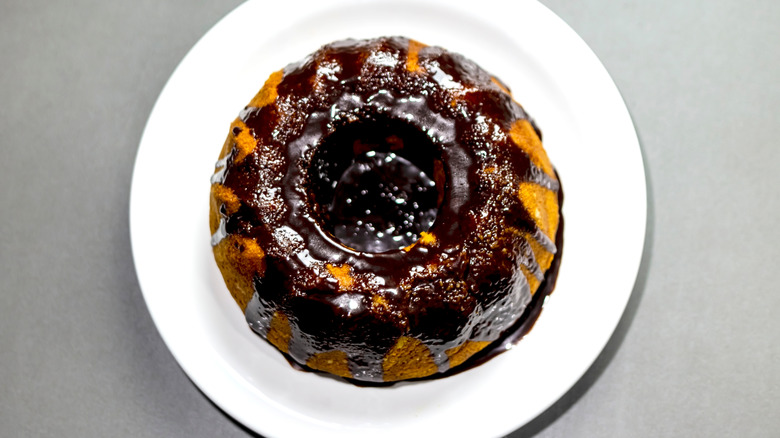Brazilian carrot cake, or bolo de cenoura as it’s called in Portuguese, is unique among its international counterparts for only using a blender, simplifying the entire cake-making process. Carrot cake itself dates back to the Middle Ages, when carrots were commonly used as a sweetener because sugar was a luxury item. Notably, the veggie-based dessert became popular in the United States during the 1960s, as it aligned with the decade’s health-conscious food movement. Around that time, Brazil introduced its own version, innovating on the American recipe. The earliest records of Brazilian carrot cake first appear in cookbooks published after 1965.
A traditional American carrot cake is fairly simple to bake, known for being a spiced nut bread that’s filled with cinnamon, nutmeg, raisins, and various nuts. Fresh carrots are grated into the batter and it’s baked in a round cake pan. A thick, dense cake comes out of the oven and is topped with cream cheese frosting, which is easy to elevate.
In contrast, Brazil’s take on this classic dessert blends the carrots into a puree, as opposed to grating them, saving time, energy, and the skin on your knuckles, all while maintaining flavor. The cake also features a sweet chocolate glaze. With everything being made in the blender, you’ll have fewer dishes and cleaning to do, leaving you more time to savor your dessert.
The differences between Brazilian and American carrot cake
When comparing how each country makes its version of carrot cake, the United States takes a more standard approach to baking the cake, while Brazil uses the blender to prepare the dessert’s batter and topping. It’s clear that one process is easier than the other. Fortunately, you can make American carrot cake with just a blender with a few adjustments to the Brazilian recipe’s method.
To use a blender to make American carrot cake, simply pulse the blender until the carrots are shredded rather than puréed, then add the remaining ingredients, blending them in short bursts. While this method isn’t perfect for getting that rustic yet uniform texture, it makes up for it with its convenience. As for the cream cheese frosting, it still needs to be whipped. However, you can dust the cake with powdered sugar or coat it in a simple glaze for a quicker topping.
Each method also produces distinct results. In the Brazilian version, the pureed carrots create a smoother, lighter bread, while the absence of nuts, dried fruit, and spices allows the flavor of the carrots and chocolate glaze to take center stage. On the other hand, with the American cake, the grated carrots don’t completely dissolve, lending the cake a hearty texture. However, the nuts, dried fruit, and spices baked into the dessert give it a more complex flavor profile that’s complemented by the rich, tangy cream cheese frosting. Regardless of which style of carrot cake you prefer, a blender can help you prepare either of them.






